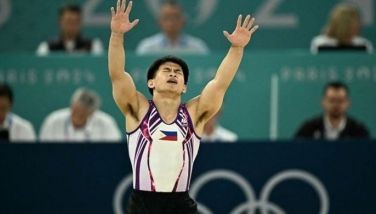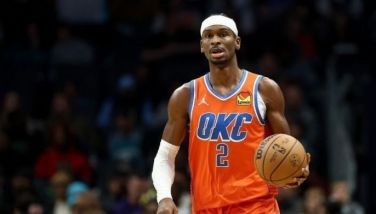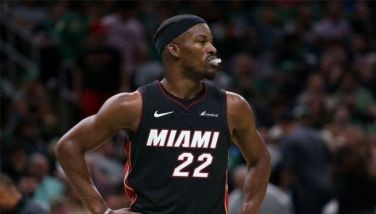Like Basketball
February 16, 2004 | 12:00am
Three Filipino basketball personalities have come to AIM for management education–one went for an MBA and two joined the ME program. They never met each other but all of them learned the same thing–how to successfully manage an enterprise.
On different occasions, I have mentioned to all three that there is very little difference between playing basketball and running an enterprise. I was quick to caution them about being intimidated by management terminologies that they did not understand. My advice was to learn to put things in ways you understand very well. And why not basketball?
In basketball, there are offensive plays and defensive strategies. Offensive plays directly affect the score of the team. Defensive strategies have a direct impact on the score of the opposing team. When both work as planned, the final score of the game will have more points for your team and less points for the opposing team. Hence, your team wins.
In an enterprise, offensive plays have great impact on the revenues. Defensive strategies have direct impact on costs. Offensive plays are what a team does in order to generate revenues. Defensive strategies are what a team does to control or keep costs down. A team wins when revenues outpace costs. A profitable situation or a winning situation is when revenues are greater than costs.
To put it another way, offensive plays manage the cash flow while defensive strategies manage the cash outflow.
The object in an offensive play is to increase the probability or the chances of putting the ball into the hoop. Patterns of play are designed to create the opportunity for a team member to score. There are inside moves or power plays. These require the use of great force or resource. There is an outside or perimeter game (long) shot. This requires greater accuracy.
The inside game often requires a series of screens and a great inside pass. In a distribution game, the hoop is the final consumer buying the product. The distributor is the point guard that passes the product to the area wholesaler who, in turn, passes it on to the retailer. The hoop is the consumer. The inside plays have greater chances of scoring two points (the ball is released closer to the hoop) but the distributor margins have to be shared with the area wholesaler and the retailer.
The outside game is when the distributor directly sells to the retailer. These are long shots from the outside. The margin for the distributor is higher but the chance of scoring is lower.
A team cannot live on one offensive play alone. The play must not be predictable. If it is, the other team can prepare and do a double team or do things to defend the hoop. If the competitors are able to anticipate the move, they can prevent the shot or the sale. A mix of offensive play is needed to keep the competitor guessing. A predictable offensive pattern will reduce the chances of making a sale.
Surprise is a key element in offense. This is why a pass to the weak side is an option when the competitors are too concentrated on the play being executed. This requires the players on the court to be cognizant of what is happening on the floor while the play is being executed. As such, it is important to be sensitive to the environment to check what is happening while the strategy is being rolled out.
But any good offensive play starts with a clear understanding of what and where the goal (or hoop) is. We do not want our players putting the ball into the competitor’s hoop.
A team cannot live on offense alone. To win, a team must defend as well. In an enterprise, this is the management of the deployment resources and costs. If the object of basketball defensive strategy is to prevent the opponent from scoring, in the enterprise, it is to prevent the costs and/or cash-outs from being greater than the revenue or cash inflows.
A good defense shuts off the offensive patterns of the competitor. Defending an area or a zone defense is one option. Another is person-focused or man-to-man defense. Again, the type of defense is a function of the character of the competing team. A zone defense kills the inside game of the competitor but the team must be able to read the situation as it unfolds. Adjustments must be made on the game plan as the assumptions of the original plan are confirmed or negated by the reality unfolding in the game.
During the conversation with an active coach, he showed the great similarity between coaching and running an enterprise. Before any game, a game plan must be made. This is based on facts gathered during scouting.
The external and competitor analysis is one of the foundations of a great plan. The other foundation is the readiness of the team to execute the plan. The practice and drills are sessions that train and prepare both the individual and the team to gain competence and have readiness to execute game plans. Practice sessions also allow the coaching staff to evaluate the capability of the individuals and the team.
Internal analysis is the other foundation of a great game plan.
The third foundation is the team philosophy. These are like the vision, mission and values of an organization. As mentioned by the active coach, the game plan for any particular game is dependent on the scouting report on the opponent, the internal readiness of the team, and the team philosophy.
The prepared game plan can be thrown out of the window when any of the scouting reports and/or team readiness assumptions are proven wrong. For example, player injuries can happen. If a player is injured just before or during the game, the game plan can change. But the new game plan must not violate the team philosophy.
This means that a coach must evaluate both the external and internal environment all the time and be ready to change strategies in real time.
Like great coaches, great entrepreneurs are great strategists whose victories are delivered by their teams. Coaching is the true test of strategizing, delegation, and motivation.
The only difference between coaching and managing an enterprise is how long it takes to know if the strategy worked or not. In basketball, it takes 48 minutes. In an enterprise, it takes longer–at least much longer than 48 minutes.
It is easier to understand complicated things if they are put into terms that are familiar. The fundamentals of managing an enterprise have taken many forms but the essence has not changed. After being able to master one of the forms, it is easy to relate to new forms if one is able to bring it back to its essence. This is how gurus help entrepreneurs simplify the complicated.
(Alejandrino J. Ferreria is the dean of the Asian Center for Entrepreneurship of the Asian Institute of Management. For further comments and inquiries, you may contact him at: [email protected]. Published "Entrepreneur’s Helpline" columns can be viewed on the AIM website at http//:www.aim.edu.ph).
On different occasions, I have mentioned to all three that there is very little difference between playing basketball and running an enterprise. I was quick to caution them about being intimidated by management terminologies that they did not understand. My advice was to learn to put things in ways you understand very well. And why not basketball?
In an enterprise, offensive plays have great impact on the revenues. Defensive strategies have direct impact on costs. Offensive plays are what a team does in order to generate revenues. Defensive strategies are what a team does to control or keep costs down. A team wins when revenues outpace costs. A profitable situation or a winning situation is when revenues are greater than costs.
To put it another way, offensive plays manage the cash flow while defensive strategies manage the cash outflow.
The inside game often requires a series of screens and a great inside pass. In a distribution game, the hoop is the final consumer buying the product. The distributor is the point guard that passes the product to the area wholesaler who, in turn, passes it on to the retailer. The hoop is the consumer. The inside plays have greater chances of scoring two points (the ball is released closer to the hoop) but the distributor margins have to be shared with the area wholesaler and the retailer.
The outside game is when the distributor directly sells to the retailer. These are long shots from the outside. The margin for the distributor is higher but the chance of scoring is lower.
A team cannot live on one offensive play alone. The play must not be predictable. If it is, the other team can prepare and do a double team or do things to defend the hoop. If the competitors are able to anticipate the move, they can prevent the shot or the sale. A mix of offensive play is needed to keep the competitor guessing. A predictable offensive pattern will reduce the chances of making a sale.
Surprise is a key element in offense. This is why a pass to the weak side is an option when the competitors are too concentrated on the play being executed. This requires the players on the court to be cognizant of what is happening on the floor while the play is being executed. As such, it is important to be sensitive to the environment to check what is happening while the strategy is being rolled out.
But any good offensive play starts with a clear understanding of what and where the goal (or hoop) is. We do not want our players putting the ball into the competitor’s hoop.
A good defense shuts off the offensive patterns of the competitor. Defending an area or a zone defense is one option. Another is person-focused or man-to-man defense. Again, the type of defense is a function of the character of the competing team. A zone defense kills the inside game of the competitor but the team must be able to read the situation as it unfolds. Adjustments must be made on the game plan as the assumptions of the original plan are confirmed or negated by the reality unfolding in the game.
The external and competitor analysis is one of the foundations of a great plan. The other foundation is the readiness of the team to execute the plan. The practice and drills are sessions that train and prepare both the individual and the team to gain competence and have readiness to execute game plans. Practice sessions also allow the coaching staff to evaluate the capability of the individuals and the team.
Internal analysis is the other foundation of a great game plan.
The third foundation is the team philosophy. These are like the vision, mission and values of an organization. As mentioned by the active coach, the game plan for any particular game is dependent on the scouting report on the opponent, the internal readiness of the team, and the team philosophy.
The prepared game plan can be thrown out of the window when any of the scouting reports and/or team readiness assumptions are proven wrong. For example, player injuries can happen. If a player is injured just before or during the game, the game plan can change. But the new game plan must not violate the team philosophy.
This means that a coach must evaluate both the external and internal environment all the time and be ready to change strategies in real time.
Like great coaches, great entrepreneurs are great strategists whose victories are delivered by their teams. Coaching is the true test of strategizing, delegation, and motivation.
The only difference between coaching and managing an enterprise is how long it takes to know if the strategy worked or not. In basketball, it takes 48 minutes. In an enterprise, it takes longer–at least much longer than 48 minutes.
(Alejandrino J. Ferreria is the dean of the Asian Center for Entrepreneurship of the Asian Institute of Management. For further comments and inquiries, you may contact him at: [email protected]. Published "Entrepreneur’s Helpline" columns can be viewed on the AIM website at http//:www.aim.edu.ph).
BrandSpace Articles
<
>
- Latest
Latest
Latest
December 16, 2024 - 10:00am
December 16, 2024 - 10:00am
December 12, 2024 - 9:00am
December 12, 2024 - 9:00am
December 5, 2024 - 12:00am
December 5, 2024 - 12:00am
November 29, 2024 - 9:30am
November 29, 2024 - 9:30am
November 28, 2024 - 8:00am
November 28, 2024 - 8:00am
November 25, 2024 - 1:00pm
November 25, 2024 - 1:00pm
Recommended




























